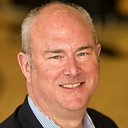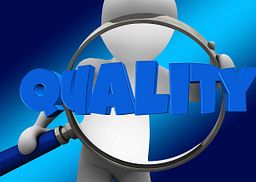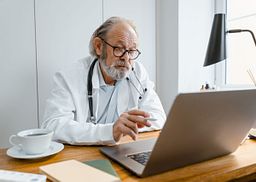National Academies Workshop Helps Define Lessons Learned from COVID
The unique voice of the PA profession and PA education contributed to an important national conversation at a National Academies of Sciences, Engineering, and Medicine workshop last week: . More than 900 attendees from 17 health professions enjoyed an exploration of how health professions education (HPE) has adapted to the COVID-19 pandemic and how the lessons learned from this experience might inform sustainable, long-term changes in HPE.
¥Ûœ„Ω∂ ”∆µ‚Äôs¬ÝCEO, Mary Jo Bondy,¬ÝDHEd, MHS, PA-C, was one of two co-chairs of the workshop, along with Darrin D‚ÄôAgostino, DO, MPH, MBA, of Kansas City University. Skylar Stewart-Clark, PhD, PA-C,¬Ýfaculty member at Charleston Southern University‚Äôs¬ÝPA program,¬Ýprovided a framing presentation¬Ýon ‚Äúpersonal change management,‚Äù¬Ýlearning¬Ýto balance professional and personal priorities during¬Ýa year of juggling the roles of¬Ýeducator, clinician, mother, and spouse¬Ý‚Äî¬Ýroles¬Ýall reshaped by the pandemic.¬Ý
‚ÄúHealth professions education has¬Ýnever¬Ýbeen under such pressure and stress,‚Äù Bondy said in her opening remarks. ‚ÄúWe¬Ýacknowledge the bravery courage,¬Ýservice, and sacrifice of our colleagues.¬ÝWe have experienced hardship and¬Ýloss,¬Ýand¬Ýwe¬Ýwill overcome the crisis.¬ÝIn this time of¬Ýhardship,¬Ýwe must look for hope.‚Äù¬Ý
Looking Back to Move Forward: A Systems Approach
As speakers reviewed the pandemic from various perspectives, a picture emerged of a public health crisis that, in addition to killing more than a quarter of a million Americans, sickening countless others, and overburdening hospitals around the country, has highlighted deep inequities and strains in the U.S. health care system. D’Agostino and others used the term syndemic to describe a “synergistic epidemic” in which the biological pandemic is exacerbated by systems failures, racial and social inequities, and the indirect health effects of the virus, such as increasing mental health and substance abuse problems. “Our current models do little to equip health professions to deal with these challenges,” D’Agostino said. “We must evolve from an industrial model to a knowledge model.”
Several speakers¬Ýadvocated for¬Ýbringing¬Ýmore¬Ýof a¬Ýsystems-thinking approach to a¬ÝU.S.¬Ýhealth care ‚Äúsystem‚Äù that is¬Ýoften very fragmented. Pinar Keskinocak,¬ÝPhD,¬Ýa¬ÝGeorgia Tech researcher¬Ýspecializing in¬Ýhealth systems, stated that ‚ÄúMedical care is¬Ýinsufficient; we need healthy lifestyle promotion.¬ÝWe need to shift the conversation from the major causes of death to the leading causes of life.‚Äù¬ÝThis kind of¬Ýtectonic¬Ýshift in health professions education will require a massive collaborative effort,¬Ýshe said, bringing together multiple stakeholders and perspectives and starting with a high tolerance for uncertainty¬Ýand variability. ‚ÄúSiloes do not work,” Keskinocak¬Ýsaid. ‚ÄúWe need to avoid going back to a comfortable place.‚Äù¬Ý
David Daniel,¬ÝPhD, a psychologist from James Madison University, compared the current need for¬Ýsystemic change to the way the nation approached the war on hunger in the 1950s, using the framework of accessibility, affordability, satisfaction, and engagement (taste).¬ÝIn this framing, a¬Ýnew interstate highway system¬Ý‚Äî analogous to the internet today ‚Äî¬Ýand¬Ýpostwar prosperity combined to¬Ýcreate a system for distributing cheap, mass-produced food around the country, but something important¬Ýwas missing¬Ýfrom¬Ýthe TV dinners: nutrition.¬ÝSimilarly, ‚Äúlooking at only one variable in medicine can result in unintended consequences,‚Äù Daniel said. ‚ÄúEverything has side effects.¬ÝWe need to not create education deserts like we created food deserts.¬ÝWe retreat to silos which are comfortable in times of stress. We need to not do that but instead lean into doing things differently.‚Äù¬Ý
Innovation, Collaboration, and the Role of Students
It was striking, though perhaps not surprising, how many of the innovations that speakers described revolved around collaboration, and around students.¬Ý‚ÄúPublic health is all about collaboration,‚Äù said Neil Maniar, PhD, MPH, of Northeastern University, who highlighted the role of the Academic Public Health Volunteer Corps, developed in Massachusetts to help connect public health¬Ýstudents and professionals¬Ýwith areas of need. Maniar noted that the corps was able to be launched quickly because of the network of existing partnerships that could be¬Ýleveraged.¬Ý
Another¬Ýpartnership that came together quickly was a practice/academic partnership described by¬ÝNancy Spector, PhD, RN, of the National Council of State Boards of Nursing, which pulled together¬Ý10 nursing¬Ýpractice, education, accreditation, and regulatory organizations to find solutions for students whose rotations had been lost due to the pandemic. Beginning with the premise that ‚Äústudents are essential workers,” the partnership helped many nursing students¬Ýgain clinical experience working largely with non-COVID patients, freeing up experienced nurses to care for COVID patients.¬Ý¬Ý
Robert Cain, MD, president of¬Ýthe American Association of Colleges of Osteopathic Medicine,¬Ýspoke about the¬Ý¬Ýprogram, with which ¥Ûœ„Ω∂ ”∆µ has been involved¬Ýsince March.¬ÝWith 11 HPE organizations working together, the group could soon ask¬Ýthe question,¬Ý‚ÄúWhat¬Ýcan we do with 1 million extra sets of hands?‚Äù¬ÝThe answer was that students could and did help with contact tracing¬Ýand¬Ýstaffing phone banks,¬Ýallowing them to contribute skills needed in the pandemic response,¬Ýas well as find new educational opportunities in a time when many traditional ones were disrupted.¬ÝThe¬Ýprogram¬Ýis¬Ýnow focusing¬Ýon integrating students into the¬Ýmassive¬Ývaccination effort about to¬Ýtake¬Ýplace, using the community networks that health¬Ýprofessions¬Ýinstitutions have developed, which¬Ýcould significantly improve vaccination outreach.¬Ý‚ÄúThe most important thing was the commitment by the 11 organizations,‚Äù Cain said. ‚ÄúInterprofessional education is key.‚Äù¬Ý
Concluding¬Ýthe presentations,¬ÝBondy interviewed Vineet Arora, MD, a Macy Faculty Scholar and bridge leader at UChicago Medicine who discussed¬Ýthe myriad innovations that have been salvaged from prior interprofessional work and reapplied in the age of COVID. Arora noted the potential of students and others who are not fully embedded in systems to be ‚Äúzero gravity thinkers,‚Äù people who can bring fresh eyes to a problem¬Ýand come up with new ideas.¬Ý¬Ý
Looking Ahead Together
If there was an overriding takeaway from the workshop, it was the need for collaboration¬Ýand innovation, driven by¬Ýclear principles and outcomes. D‚ÄôAgostino¬Ýdescribed¬Ýa framework¬Ýthat¬Ýis taking shape: ‚ÄúHealth professions education has not changed much,‚Äù he said. ‚ÄúThere is a¬Ýneed¬Ýfor leadership to support innovation‚Ķ and a¬Ýsystems-based approach¬Ýto¬Ýdesigning education to prepare the future workforce.‚Äù¬Ý
One key¬Ýto this model will be competencies, in which the PA profession has invested significant effort in the past two years, with¬Ý¥Ûœ„Ω∂ ”∆µ‚Äôs¬Ý¬Ýand the¬Ýrevised Competencies for the PA Profession that a Cross-Org task force developed this year.¬ÝAmerican Medical Association Vice President of Undergraduate Medical Education Innovations,¬ÝKimberly Lomis, MD,¬Ýencouraged educators to ‚Äúkeep the outcomes in mind. That is¬Ýmore important than¬Ýsticking to the traditional learning you may have always done.‚Äù¬ÝFor example,¬Ýcommunication skills can be developed by¬Ýhelping an elderly patient prepare¬Ýfor a Telehealth visit, she said.¬ÝAnd a competency-based approach allows for more focused lifelong learning: ‚ÄúA competency-based framework accepts that there will be gaps¬Ý[in education]‚Ķ¬Ýwe can follow up over time.‚Äù¬Ý
“Looking forward, we need to find commonalities across PA programs and also across the health professions,” said Stewart-Clark. “We can draw on the incremental work that has been done in the past on overhauling health professions education through leadership, trauma-informed pedagogy, competencies, and social justice. However, we still have a gap to bridge. The pandemic has highlighted the importance of interprofessional education, and the power of a systems-based approach to ensure our curricula accurately reflect PA practice.”
All workshop presentations were recorded and will be posted to the by December 11. Slides and other materials are already available.




